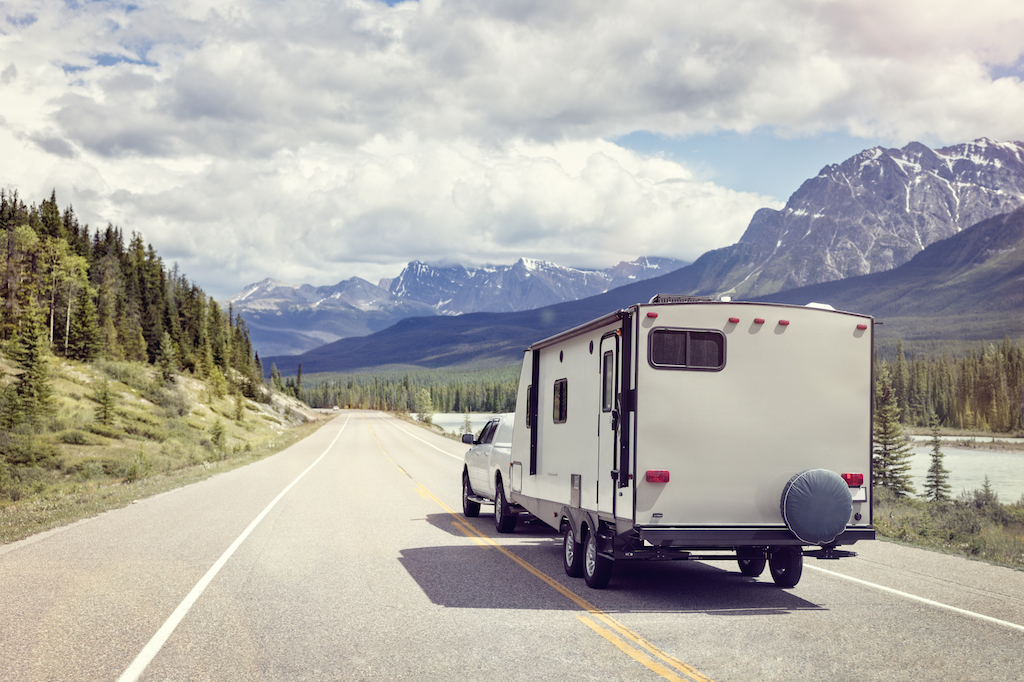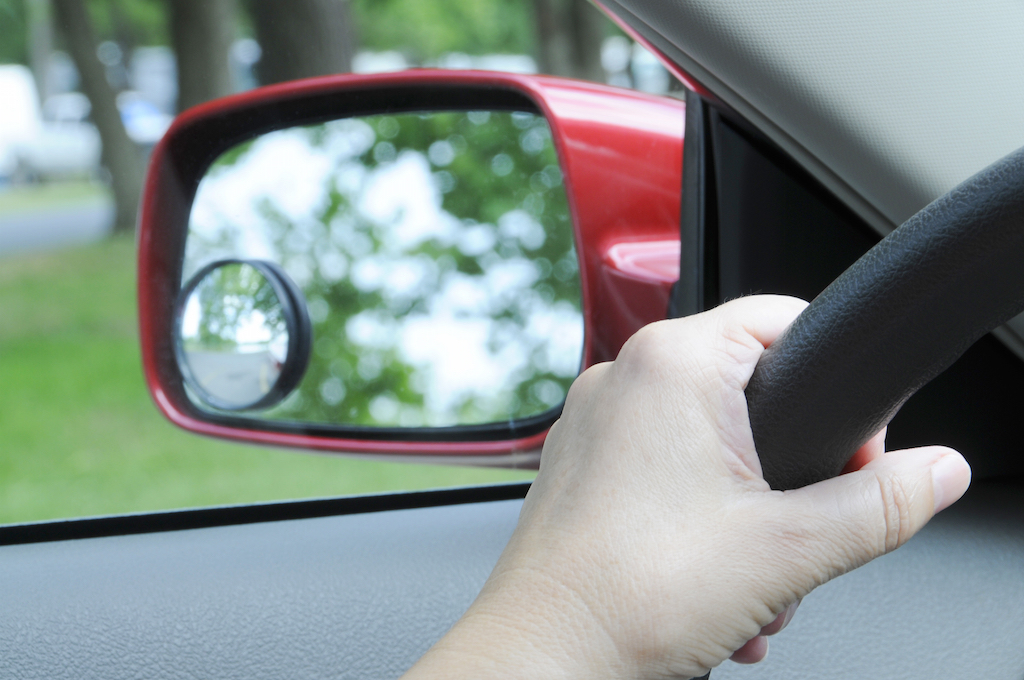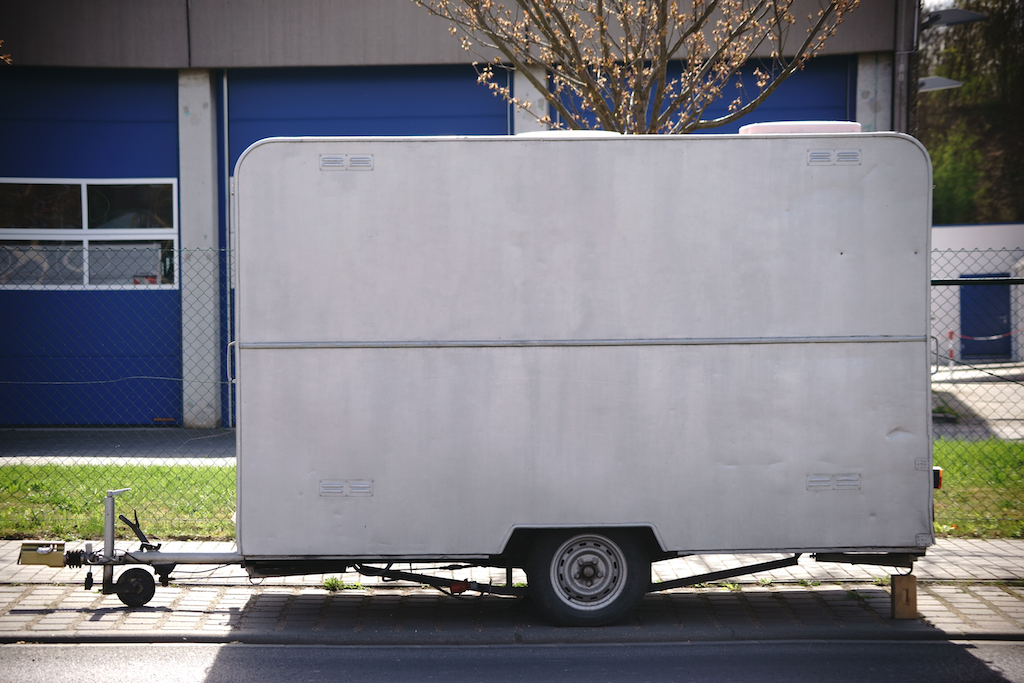When you drive forward with a trailer, the rive wheels are ahead of the ball joint, which lends stability and momentum. However, when reversing with a trailer, the drive wheels are behind the ball joint, allowing the trailer’s wheels to pivot, not in concert with, but in response to the tow vehicle’s trajectory. For the novice tow driver, all of this means you may end up backing your trailer over your neighbor’s azaleas.
Below are a few tips to help you be a better driver when reversing your trailer. While there is nothing natural or intuitive about backing up a tow, following these steps and staying calm will help to make this process less stressful.
Practice First
As with any skill set, practicing backing up with a trailer will make you better at it. Start with a long trailer, as shorter trailers are more responsive and therefore more likely to jackknife. The tradeoff is that a long trailer takes much more effort to navigate a corner.
Use orange cones to mark out an area—preferably, a large and flat area like a parking lot—to practice in and to spot yourself. Start slow and make small corrections. Enlist the help of a spotter who can tell you about your progress and point out obstacles outside of your line of sight.
Know Before You Go
Before you start backing up your trailer, get out of the vehicle and do an environmental inspection. Keep a look out for obstacles that may cause damage if contacted—such as fire hydrants or tree stumps—and for low-hanging tree branches or dangling electrical lines. Also, look out for children playing and for pets that may quickly get behind your tow rig while reversing.
Understand Turning

Your trailer will move in the opposite direction the steering wheel is turning. Another way to think about this is that the trailer will move in the same direction the bottom of your steering wheel is pointing.
Understanding this is imperative toward gaining and maintaining control of your trailer. The best position to take when reversing is with one hand at the six o’clock position on the steering wheel while the rest of you is turned so that you are looking directly at the trailer. This way, your hand movements will directly correspond to the direction the trailer will take. Pulling forward will straighten out the trailer; do not be afraid to do this as often as needed.
Roll down the windows to improve your visibility. Have any passengers get out of the vehicle before you start to back up and get out when needed to gauge your progress and to get a better perspective. A backup camera can help with seeing your trailer’s orientation and obstacles you may be running over. Camera Source is your one-stop for aftermarket backup cameras and your rear-mounted camera needs.
Check Your Mirrors

Use a Spotter
It may be necessary to have a spotter assisting the backup if there are too many hazards in the area. You and your spotter should be equipped with two-way radios to make communication easier. Your spotter should not only be looking for things you may run over, but also for things you may run into, like tree branches or leaning trees.
You should also check your connections. It may be unlikely, but your safety cables, tether, electrical cable, or ball coupler may have loosened or slipped during your drive. This is a good time to check on everything and make corrections if needed.
Parking to Your Blind Side

While parking to the driver’s side is not easy, at least you will have the benefit of being able to see what is going on throughout the turn. If you were to turn to the passenger’s side, you would lose sight of the far side of the trailer, making for a hazardous situation.
You should practice blindside turning before you have to do it for real. A spotter is essential for successfully performing this maneuver, as the risk of property damage is highest when turning to the blind side. If you can extend your rearview mirrors with telescoping mirrors, this will improve the field of visibility. If you have electrically adjustable rear view mirrors, you can adjust the mirrors as you need to maintain visibility.
The best way to approach a blindside turn is to:
- Move the rig ahead of the parking spot as far right as possible without going into a ditch or gutter. As you approach the spot, dip into the parking spot slightly and back out. Doing this will align the trailer for the turn. Make sure that the rear bumper is not too far from the opening of the entrance.
- Straighten your rig as needed.
- Get out, and inspect the area for obstacles.
- Start reversing with the wheel straight. Place your hand on the bottom of the steering wheel to avoid confusion about which way to turn the wheel. Go slow.
- Be ready for when the right corner of your rear bumper meets the near corner of the entrance, and swing out left (if your hand is at six o’clock on the steering wheel, turn left). This will make the trailer turn right.
- Keep an eye out on the trailer’s position, and turn in the other direction to tighten the turn radius before running into the left side ditch/shoulder/gutter. Stop when your towing vehicle is in the middle of the road.
- Cut the steering wheel while still on the brake for a left turn if you were going straight. Slowly release the brake, and back up the trailer into the parking spot, making micro-corrections if needed.
- Turn the steering wheel in the opposite direction to straighten out the trailer. Go slow, and do not crank the wheel.
Perseverance Pays
Never allow your trailer to be at more than 90 degrees to the tow vehicle. Doing so will cause a jackknife to occur or may make the trailer roll over itself. Turn in the opposite direction to straighten the trailer if the turn angle gets out of control, and do not be afraid to start over if needed.
Master Trailer Backup
As with stunt driving and parallel parking, backing up a trailer is a driving skill that does not come naturally to the novice driver, but it can be mastered with practice and patience. Understanding the physics, having good help, practicing, and believing in yourself will go a long way toward making you the master of reverse driving your trailer.








